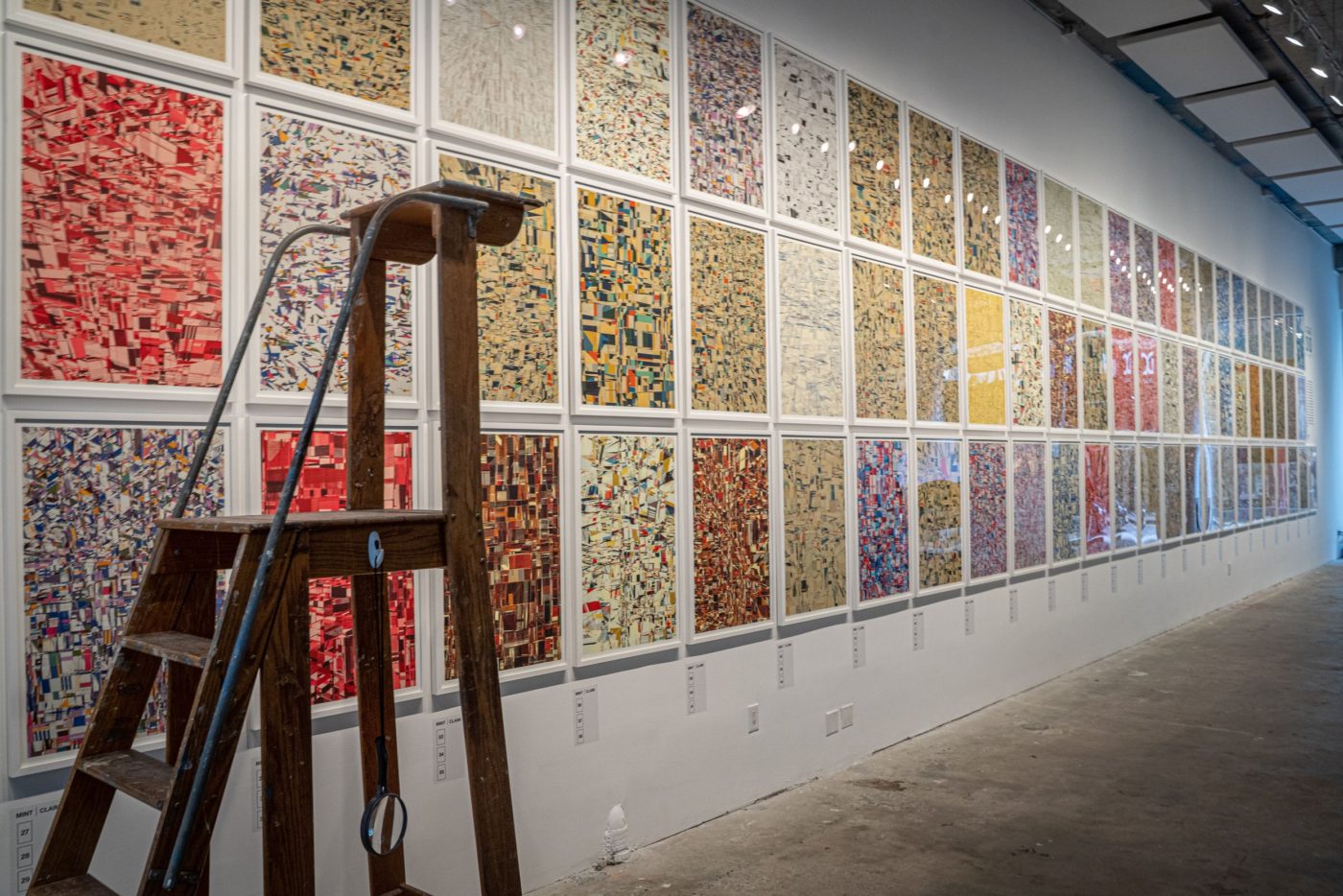 by Michael McCarty
by Michael McCarty
Founder, Tribeca Printworks
What Is an Archival Pigment Print?
Archival-quality prints use refined pigment particles to create exquisite, high-resolution artwork. This method of printing creates museum-quality artwork designed to last, and the ink and paper are critical elements in an archival pigment print’s life span. In a printing context, “archival” refers to prints that last for extended periods, provided they receive the proper care and storage.
Today, innovative digital printing techniques provide better longevity than legacy methods. The quintessential archival print is the perfect mixture of different factors, from ink to paper to mounting and storage. Individuals, artists, and museum curators have various options to choose from, though, ranging from canvas to cotton watercolor paper. These options allow them to customize artwork based on their specific style, needs, and budget.
What Is the History of Archival Quality Photo Prints?
Archival digital photo printing dates back to the 1990s. This method, which is often used interchangeably with giclee printing, was originally completed by spraying ink from a digital printer onto the surface of a paper. The extra droplets were then deflected away to reveal the image. Years later, Piezo drop-on-demand printers were primarily used instead of digital printers.
This new method allows multiple ink cartridges to go into a print head. This head, which has small charged crystals in various colors, releases a specific amount of ink through an electrostatic charge. The finished result? A beautiful, pigmented print that you can enjoy for years to come.
How Can You Recognize a Pigment Print?
Pigmented prints are easily recognizable. They typically have a stiffer appearance than dye-based prints. These prints are more stable than their dye-based counterparts, offering greater longevity at well over 100 years. The paper quality used for pigment printing also has a substantial impact on the durability of the piece.
When archival pigment printing began, there was a question of stability regarding the materials used. Technology has created remarkably stable inks and papers that make pigment prints last for a long time.
Is an Archival Pigment Print the Same as Giclee?
The terms archival pigment print and giclee print describe a piece printed directly from a digital image to a photograph on paper. The processes are accomplished using an inkjet printer as an output device. These terms are often used interchangeably — their principal difference is only in their various definitions.
Jack Duganne coined the word giclee in the 1990s. He used it exclusively to differentiate prints made on his personal IRIS inkjet printer from those made on the same type of printer using commercial prepress inks. Today, you’ll find that most printers use pigment-based inks for archival prints. Their use ensures the longevity of giclee and archival pigment prints for more than 100 years.
How Is Pigment Printing Used in Photography?
Determining the best paper and printing process for archival photo prints can be challenging. You want to ensure ultimate clarity, durability, and overall quality. Depending on your desired outcome, there are a few options for your printing process. Many photographers choose chromogenic prints using silver-based paper and continuous-tone printers.
Pigment prints in photography are also known as giclee. Professionals use professional inkjet printers and pigment ink to create the highest quality. Pigment prints are ideal for anyone who wants their prints to transport them back to the classic images from the darkroom age. Their softness and timeless appearance can last for generations.
How Long Do Archival Prints Last?
Archival prints are created with best-in-class materials and by top manufacturers. You must use standard archival paper since the inks are pigment-based, not dye-based. If you display archival prints under typical lighting conditions and take the relevant precautions, you can expect the work to last:
- About 200 years in an album
- Around 80 years when displayed behind glass
- About 50 years when displayed without glass
Any print exposed to direct UV radiation (i.e., sunlight) will fade more quickly.
Dye-Based vs. Pigment-Based Inks
Your chosen archival ink is one of the most important considerations for archival print longevity. Dye-based and pigment-based inks are among the most common printing options. The principal difference between the two is how the color is suspended in the liquid. Dye-based inks dissolve completely in the liquid to create the color, while pigment inks comprise microscopic pigments that remain suspended in the liquid, only partially dissolved.
Pigment-based ink’s tiny particles cling to the print surface immediately after printing, limiting bleeding and smudging. It is also a highly durable medium with high water resistance, boosting longevity in archival prints.
Does Archival Ink Fade?
Archival ink is far more resistant to fading than other dye-based inks. The combination of pigments and superior paper quality constitutes its “archival” status. Archival ink prints also offer greater scratch resistance and color stability.
Pigment-based inks are significantly longer-lasting, as they’re made from finely ground powders suspended in a liquid. The inks aren’t water-soluble, so they dry quicker and bind with the paper fibers to make them highly resistant to fading.
The Qualities of Your Paper
Another crucial element to creating archival-quality prints is choosing paper with the right qualities. Depending on your desired results, you can consider:
- Optical brightening agents (OBAs): OBAs give your paper a bright, white appearance by absorbing ultraviolet (UV) light and bouncing it back as visible light in the blue spectrum. This extra brightness can transform your prints, capturing unprecedented vividness. However, they do fade over time, which can change the overall aesthetic.
- Acid and lignin-free paper: Acid and lignin can be extremely detrimental to print longevity. Acid and lignin-free paper is a purified material that resists becoming progressively more acidic over time. If you use paper with lignin or acid, it will age much faster and lose its color.
- Base material: Your choice of base material significantly differs from print quality and longevity. Different materials offer various textures, advantages and drawbacks, and new materials appear on the printing scene all the time. Classic wood pulp paper is the most traditional option, but it does come with challenges, like acidity. Cotton or polyester rag is an increasingly popular option as it boosts longevity and holds onto ink better for improved color fastness.
What Is the Process of Pigment Printing?
An archival digital print is printed onto paper using a high-quality inkjet printer and pigment-based ink. This process achieves a clear and durable finished print with excellent resolution. The process’s flexibility means you can get creative with your archival prints.
Pigment printing focuses on individual pieces, not on bulk creations. Details are paramount in archival pigment prints, which is why this is the ideal avenue for those who want to display their work in its best light. The more intensive printing process also contributes to the incredible lasting power of these prints.
How Are Archival Prints on Canvas Used?
Archival prints can replicate any traditional image and can be reproduced in a wide range of sizes, offering endless possibilities. This printing method can be used by amateur artists who want to display or sell their work, as well as individuals who want to preserve prints for future generations.
Most commonly, the archival photo printing method is used by art galleries and museums that wish to display notable prints or preserve some aspect of culture well into the future.

Why Is an Archival Pigment Print on Canvas Best for Museum-Quality Artwork?
Unlike a standard dye-based inkjet printer that can produce larger quantities of work at a time, this method focuses more on individual pieces and designing them in a way that’s built to last. An archival print is meant to have a lifespan of a century—or more.
When it’s kept in the right conditions and lighting, an archival print on canvas will retain its colors and beauty through long-term display. All these qualities make archival prints ideal for displaying top-quality work in galleries and museums.

Interested in Learning More About Our Archival Printing Services?
The Tribeca Printworks team has decades of combined experience in the digital printing and art industry. We use the highest quality materials and printing methods to achieve best-in-class archival pigment prints. This combination ensures that the finished result is aesthetically pleasing and long-lasting.
Let us help you create beautiful, long-lasting artworks with competitive pricing and fast turnaround times. Whether you want print-only or print-and-frame services, we’re here to deliver a personalized experience as unique as your artwork. We offer archival prints in a variety of mediums. To receive a free quote and consultation, be sure to fill out our online contact form today.

